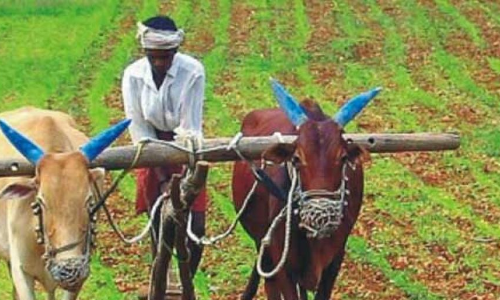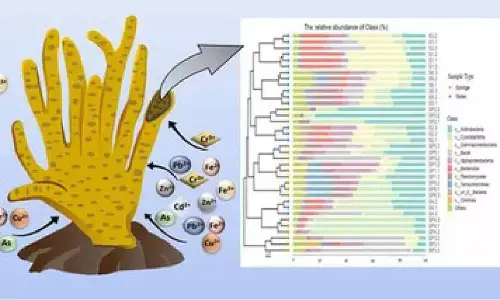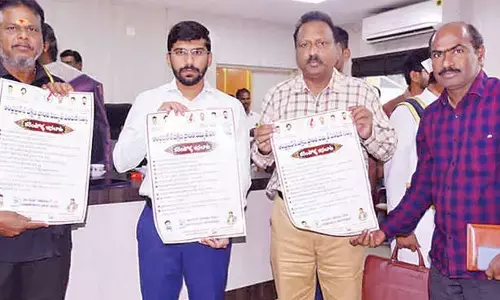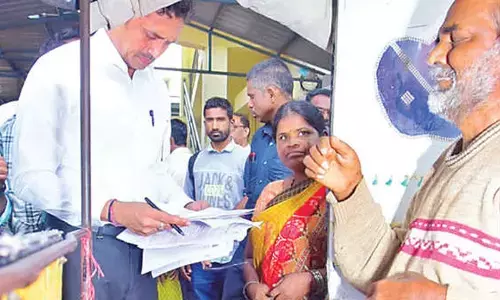Sustainable use of the natural resources Part-III

The National Commission on Agriculture (1976) emphasized on scientific land use planning for achieving food security, self-reliance and enhanced livelihood security. The National Policy for Farmers (2007) has recommended revival of existing Land Use Boards and their linkage to district-level land-use Committees, so that they can provide quality and proactive advice to farmers on land use.
The National Commission on Agriculture (1976) emphasized on scientific land use planning for achieving food security, self-reliance and enhanced livelihood security. The National Policy for Farmers (2007) has recommended revival of existing Land Use Boards and their linkage to district-level land-use Committees, so that they can provide quality and proactive advice to farmers on land use.
However it could be identified that between the years 1950-51 and 2007-08, land utilisation in India underwent significant changes. Lands under net sown area, forests and non-agricultural uses have increased while simultaneously forest and agricultural lands have almost halved from 40.7% to 22.63%.
Further, the per capita amount of agricultural land has reduced by 67% from 1951 (0.48 Ha) to 2007/08 (0.16 Ha). Land degradation is caused by natural processes such as wind or rain and is often aggravated by activities like deforestation and urbanisation. Indian Council of Agricultural Research (ICAR) estimates that as of 2010, 120 M.Ha out of a total geographical area of 328.73 M.Ha is affected by land degradation. This puts greater strain on the resources.
In India land is comparatively less productive than land many parts of the world and is getting further degraded due to lack of land use as per land capabilities. Wasteland and degraded land are brought under vegetation cover with reasonable efforts, and which is currently under-utilized and land which is deteriorating for lack of appropriate land management practices, water and soil management or an account of natural causes.
Wastelands can result from inherent/imposed disabilities such as by location, environment, chemical and physical properties of the soil and financial management constraints. State wise area under waste land details given in Annexure-II.
Land degradation has been found to cause decline in soil fertility, and also cause alkalinity/salinity/acidity of land and water logging. Degraded lands have also been found to be used by marginal farmers and tribal population which result in reduced productivity and economic losses to the farmers, to the tune of Rs. 2,85,000 million .
Further it is observed that India produces about 245 million tons of food grains. It is estimated that by 2020 the demand for food grains will rise by 25% to 307 million tons. Solution therefore would be to achieve the desired productivity without any further diversion of agricultural land.
On the basis of aforementioned studies, it can be seen that there is an urgent and pressing need for an in-depth review of land use patterns in the country that would focus on the aspects of dynamic conservation, sustainable development and equitable access to the benefits of public interventions. This therefore necessitates a study that would critically examine and pave the way for further development in this regard, a study that should address, among other things.
- To conduct an in-depth review of agricultural land use patterns in the country which would likely result in sustainable agriculture development
- Dynamic conservation
- Ensure equitable access to land
- Critically evaluate the different dimensions of agricultural land use in India and arrive at policy recommendations such that it would result in developing policy initiatives for efficient land use of both agricultural as well as non-agricultural land.
- To assess efficient management of natural resources of the country with integrated and technology driven and special emphasis on land resources.
- To assess the dynamics of land use and set benchmarks for the health of the land resources for measuring improvement or degradation on account of man-made interventions, natural phenomena by year after year.
- To develop and aid in the governance related aspects of effective land use in agriculture and in line with the guiding principles of National Land Use Policy - which is to protect agricultural lands from land use conversions so as to ensure food security and to meet consumption needs of a growing population and to meet livelihood needs of the dependent population.
The status of the land resource can also be observed from space through the use of state-of-the-art technology such as remote sensing and satellite imagery.
The National Remote Sensing Agency, at the national level, and the Andhra Pradesh State Satellite Research Centre, apart from other agencies in different states, are already engaged in this work.
The use of this technology can help identify the current status of the land and the use to which it is being put. The ABC classification earlier referred will also be facilitated the application of this technology.
It is by this method that, at the national level, a wasteland atlas was developed in the 1990s.
An Indian Remote Sensing Satellites (IRSS) identified 14 different categories of wasteland according to the IRSS which are as follows Watershed management is, in the broader sense, an undertaking to maintain the equilibrium between elements of the natural ecosystem of vegetation, land or water on the one hand and man’s activities on the other hand.
When all possible inputs are obtained, man still remains on centre stage in the entire watershed system. The key issue is how far the people can be motivated, involved and organized to drive the movement. No significant improvement can be expected without the people being brought to centre stage.








